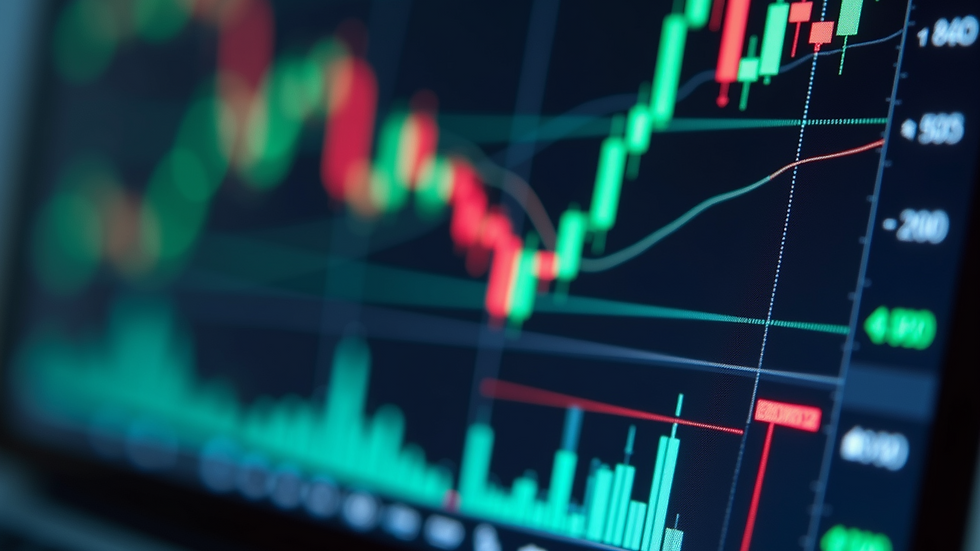News Recap by forex368: Trading Opportunities and Market Analysis
- forex368

- Jun 10, 2023
- 4 min read
In recent weeks, the U.S. stock market has shown signs of a broader rally, indicating growing optimism among investors. While tech and growth stocks have traditionally been seen as safe havens, economically sensitive areas such as small caps, energy shares, and industrial stocks are experiencing substantial rallies.
However, conflicting signals are emerging across different asset classes, leading to uncertainty for investors. In this news recap by forex368.com, we explore trading opportunities and provide context for the current market conditions.
Stocks:
Investors face the challenge of determining which market signals to follow as conflicting indicators emerge. While stocks have shown signs of broadening out beyond a few tech giants, bonds indicate a gloomy outlook with increasing bets on Federal Reserve rate cuts. Caution is advised as miscalculating the likelihood of a recession could lead to substantial losses. The broadening participation of small-cap and cyclical stocks is encouraging, but skepticism remains due to the Fed's inflation-fighting campaign. Investors are reminded to exercise caution and avoid chasing gains in this uncertain economic outlook.
Tesla:
Short sellers of Tesla Inc (TSLA.O) shares have incurred a substantial loss of approximately $6.08 billion during the company's recent winning streak. Tesla's ongoing rally has propelled the stock up by around 35% since May 24, causing short sellers to increase their bets despite the stock's ascent. As of Friday, Tesla shares were trading at their highest level since early October. This situation highlights the risks involved in short selling and the challenges faced by those betting against Tesla's success.
Dollar:
The US dollar experienced fluctuations against major currencies, declining by -0.49% in the DXY index this week. The decline was triggered by below-expectation US services ISM data and central bank actions in Australia and Canada. The market anticipates no change in FOMC rates despite these hikes. The upcoming US CPI release and the surge in initial jobless claims are influencing market sentiment. The US dollar faced declines against all major currencies, with the largest drops seen against the Australian dollar (AUD) and New Zealand dollar (NZD).
Biased Opinion?:
The dominance of the US dollar may be approaching its end as China rises as a global economic power and geopolitical shifts impact the world economy. The CEO of Russia's VTB bank predicts that China will gradually remove currency restrictions and position the yuan as a convertible currency. As countries settle payments outside the US dollar and euro, the long-standing era of dollar dominance is coming to a close.
Precious metals:
Gold experienced a slight decline on Friday, influenced by a stronger dollar and higher yields. However, it was on track for its best week since early May, thanks to weaker job data that strengthened expectations of the Federal Reserve maintaining interest rates in the upcoming week. By 3:15 p.m. EDT (1915 GMT), spot gold had fallen 0.3% to $1,961.39 per ounce but was still poised for a 0.7% weekly increase. U.S. gold futures settled down 0.1% to $1,977.20.
Traders anticipate that gold will continue to fluctuate within the $1,940-$1,990 range until the release of inflation data and the Fed's decision next week. The dollar index rebounded from two-week lows, making gold more expensive for international buyers, while higher 10-year Treasury yields reduced the attractiveness of zero-yield bullion. The market currently reflects a 72% likelihood of the Fed maintaining its stance next week, with a 67% chance of an interest rate hike in July, as indicated by the CME Fedwatch tool. Meanwhile, China increased its gold reserves for the seventh consecutive month, reaching 67.27 million fine troy ounces by the end of May.
Analysts noted a notable rise in the number of central banks planning to acquire gold over the next five years. In other precious metal news, palladium, commonly used in emissions-controlling devices for cars, plummeted to its lowest level since May 2019, hovering around $1,324. On the other hand, silver rose 0.1% to $24.26 per ounce, aiming for its strongest week since early April, while platinum fell 0.1% to $1,009.30.
Oil:
The US Energy Department announced its intention to purchase an additional 3 million barrels of crude oil for the Strategic Petroleum Reserve. This decision aims to replenish the emergency reserve after releasing over 200 million barrels last year. The department has opened bidding for the new solicitation of sour crude oil and plans to award contracts by June 30. This move reflects the agency's efforts to manage energy costs and ensure a stable oil supply.
"The Crypto Regulator Wars":
Amidst increasing regulatory scrutiny in the US, the cryptocurrency industry is witnessing a shift in the banking landscape. US crypto companies are turning to smaller regional lenders and Swiss/Asian banks as mainstream banks grow cautious. In the UK, companies are resorting to payment-service providers due to banking access issues.
The closure of major players like Binance and Coinbase face lawsuits from the SEC, adding further complexity to the situation. Efforts to rebuild a crypto-banking system are underway, diversifying the industry and potentially enhancing its resilience.
Conclusion:
As the US stock market experiences a broader rally and conflicting signals emerge across different asset classes, caution is advised for investors. Tesla's ongoing rally poses challenges for short sellers, while the US dollar faces fluctuations against major currencies.
The rise of China and changing dynamics in the world economy may challenge the dominance of the US dollar. In the oil market, the US Energy Department plans to purchase additional crude oil for the Strategic Petroleum Reserve. Meanwhile, the cryptocurrency industry is adapting to regulatory changes, with a shift toward smaller regional banks and payment-service providers.





